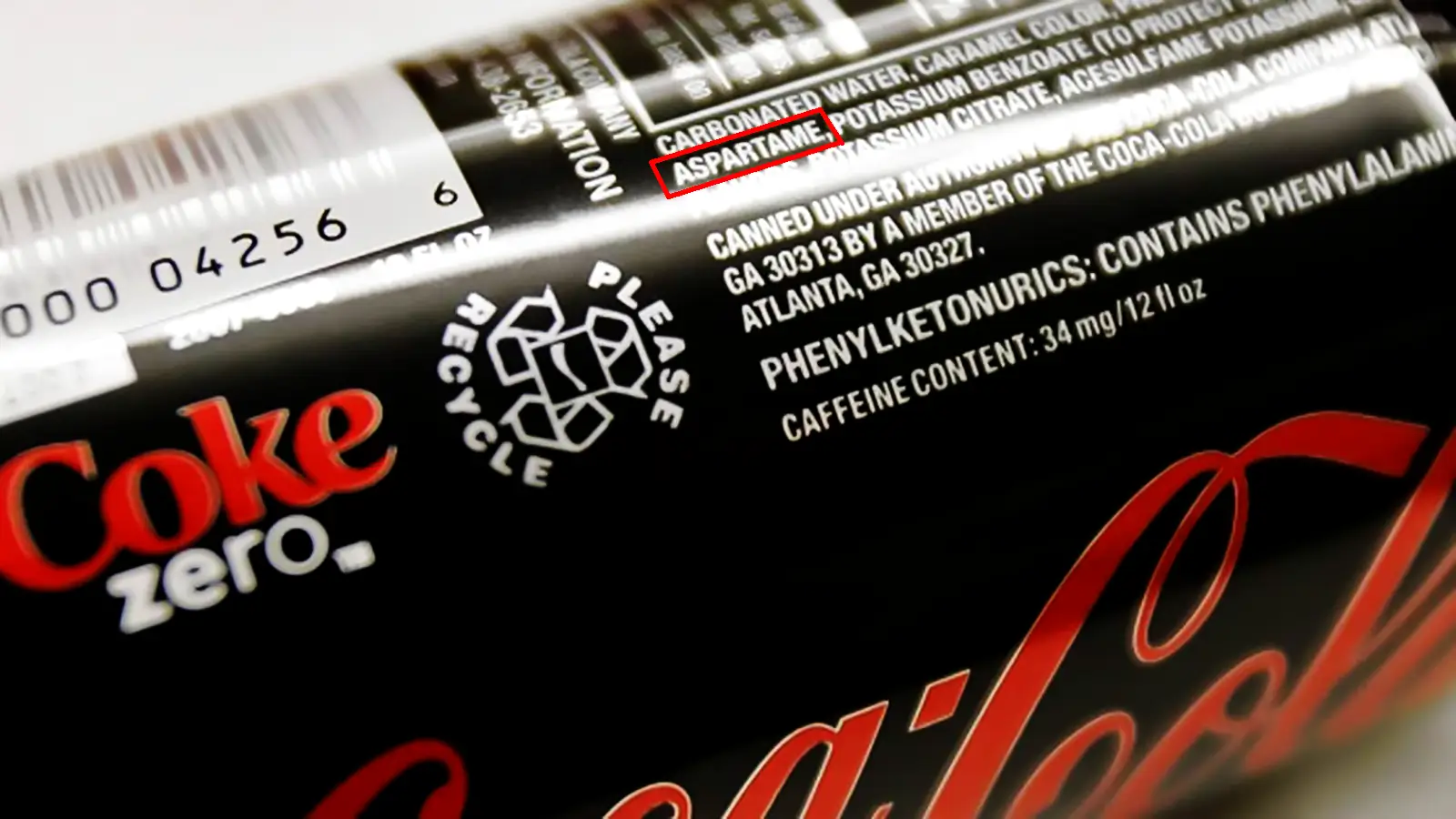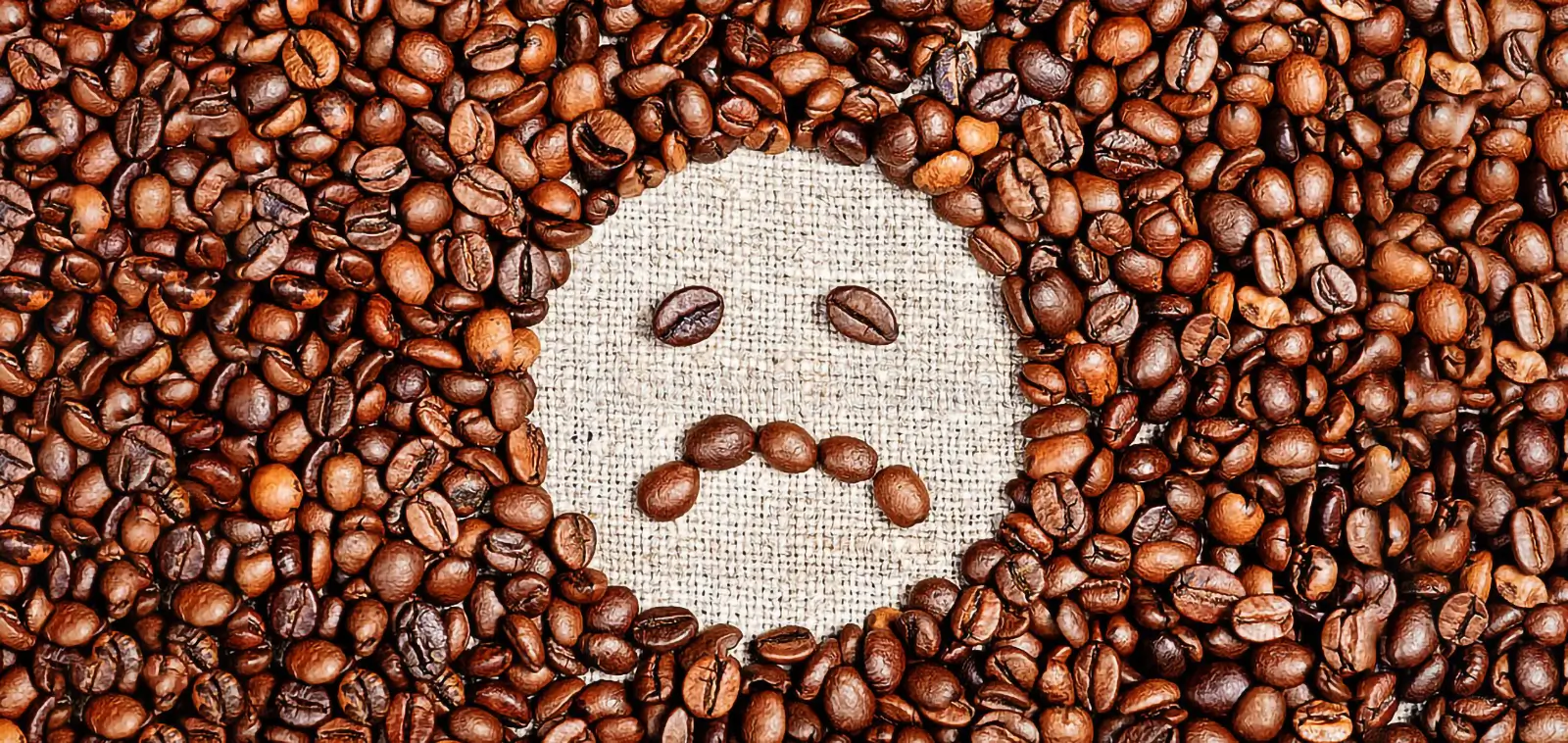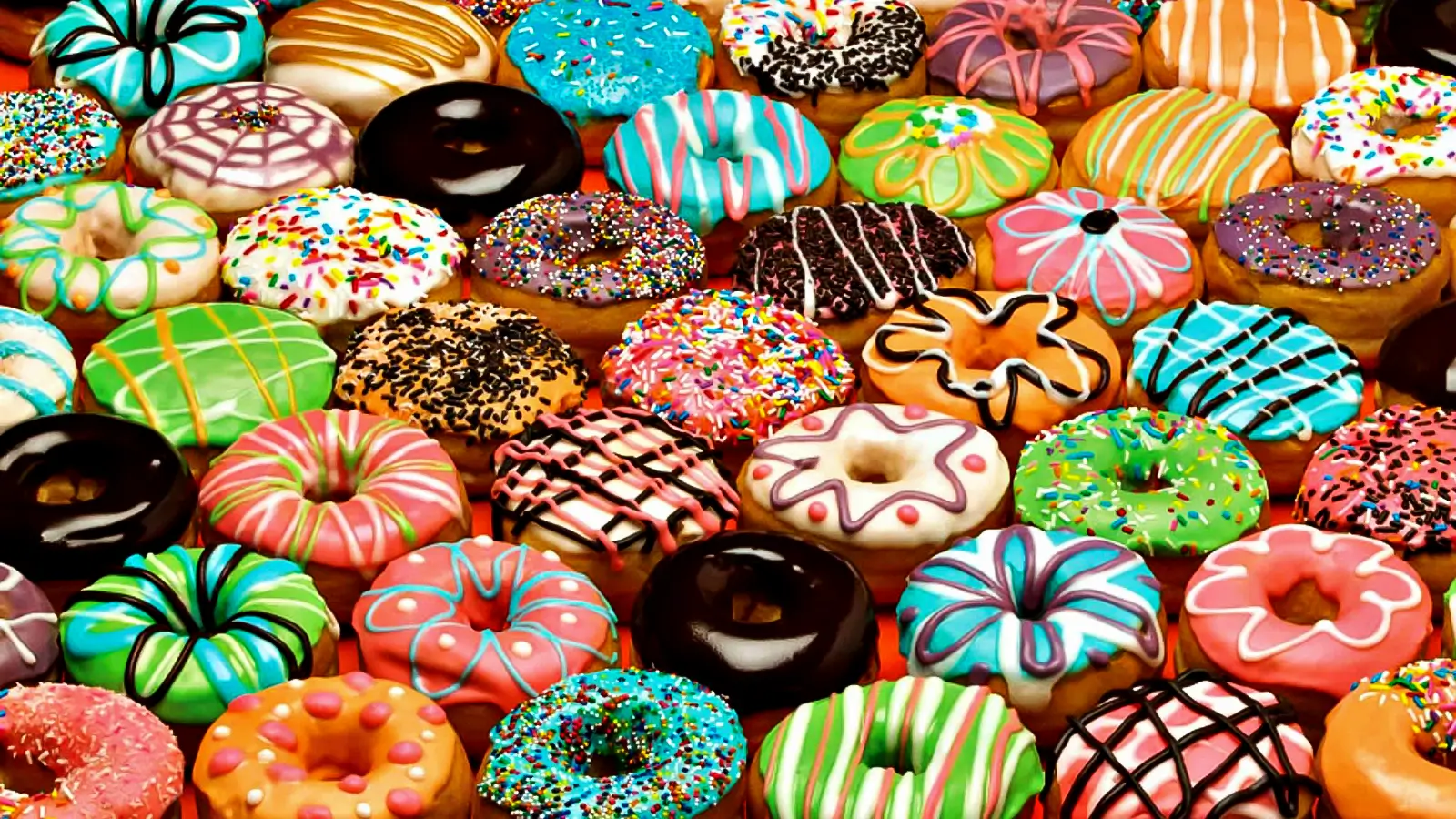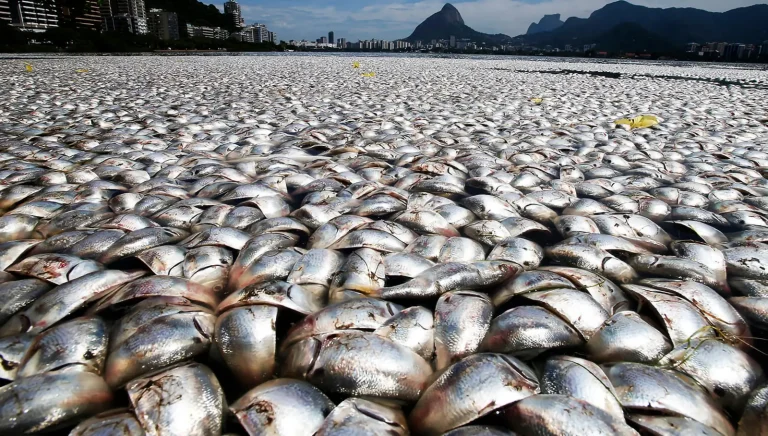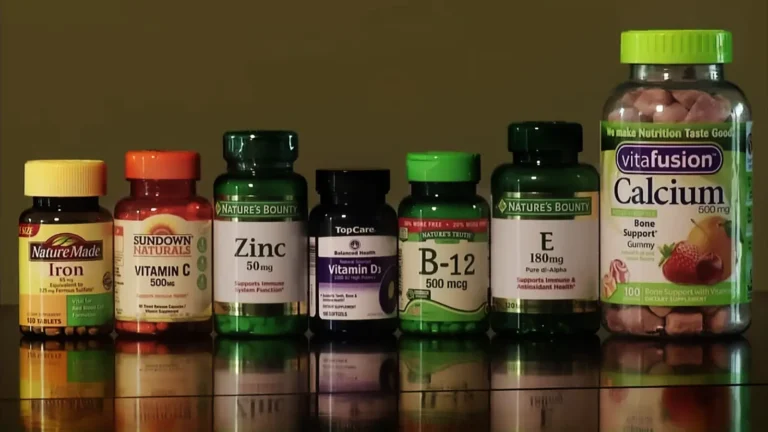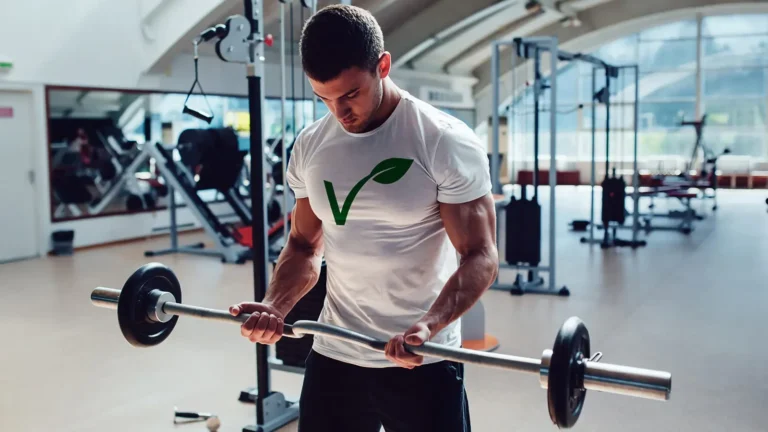Coca-Cola Company- Historical Review
If you want to know what is the secret ingredient of Coca-Cola syrup. It is Nazi Germany, Guatemalan death squads, neuromarketing and child labor.
Milos Pokimica
Written By: Milos Pokimica
Medically Reviewed by: Dr. Xiùying Wáng, M.D.
Updated May 28, 2023When people talk about the food industry, they think of Coca-Cola and Nestle. Coca-Cola and Nestle are not in the food industry. Far from it. Nestle is the biggest one on paper because oligarchy does not want regular people to know what is the real way of conducting business. That is the reason why, by design these companies like Cargill and others issue no public stock, nor annual reports. It is only truthful to say that we do not know which one is the biggest, and it is not Nestle for sure. Again as I have written before these companies are more secretive than any oil company, bank, or government intelligence service. However, even stupid Coca-Cola has the same pattern of behavior.
If you want to know what is the secret ingredient to Cola syrup.
It is Nazi Germany, Guatemalan death squads, neuromarketing, and child labor.
The story of Coca-Cola began with an alcoholic beverage called Pemberton’s French Wine Cola created by druggist John Stith Pemberton who was also a morphine addict too.
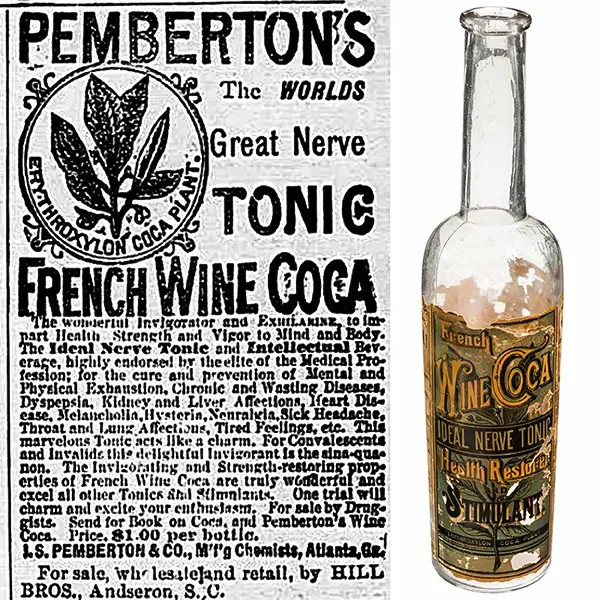
Among its ingredients was a euphoria-inducing mixture of alcohol and cocaine called cocaethylene. The drink marketed as a sexual stimulant and “a most wonderful invigorator of sexual organs’’ was outlawed following new temperance laws in 1885. Pemberton replaced the wine with sugar syrup and debuted a new product in 1886. It was marketed as an “ideal brain tonic.” Coca-Cola remained cocaine infused until 1903 when the company bowed to white fears of exploding cocaine use among African Americans. As the story goes African Americans have taken to “Sniffing“ since being deprived of Whisky by prohibition as a “new southern menace.” Because of Coca-Cola, African Americans had gained access to cocaine in increasing numbers because the beverage became cheap and was sold for a nickel each with the introduction of bottles in 1899. However, it took some more time and Coca-Cola everywhere became completely cocaine-free by 1929 but was still infused and it is infused to this day with coca leaf extract for taste purposes.
Coca-Cola is the only company in the world, well actually Stepan Company the different one, but for the interest of making Coca-Cola is the only company allowed by the government to import and process coca leaves. Stepan Company imports leaves mostly from South America from countries like Peru and Columbia. And it is all legal.
If Coke can work partnerships to bring coca leaves into the United States, why can’t the rest of us?
Are there different laws for different people? If I were to travel to Peru and try to go to the US with a small batch of coca leaves (perhaps to brew tea), I would be detained by border officials. Coke has no doubt liked it this way because competition for coca leaves would drive up prices, which is never good for business.
If you really want to know why is cocaine the most expensive drug on the black market it is because of Coca-Cola which needs hundreds of tons of leaves annually.
The syrup is only made in the US and then shipped worldwide because of its “secret ingredient.” How is it possible that generic 7-up or grape soda, for example, can fool our taste buds, yet finding a generic cola capable of mimicking the awesomeness that is Coke remains all but impossible? That is Cola’s secret ingredient. The crazy reason why no company can truly emulate the taste of Coke. Because coca leaf extract is an ingredient no other company in the world can bye. And doing business with Guatemalan death squads to kill union leaders in the late 70s and pioneering the supersizing of America is just added bonus.
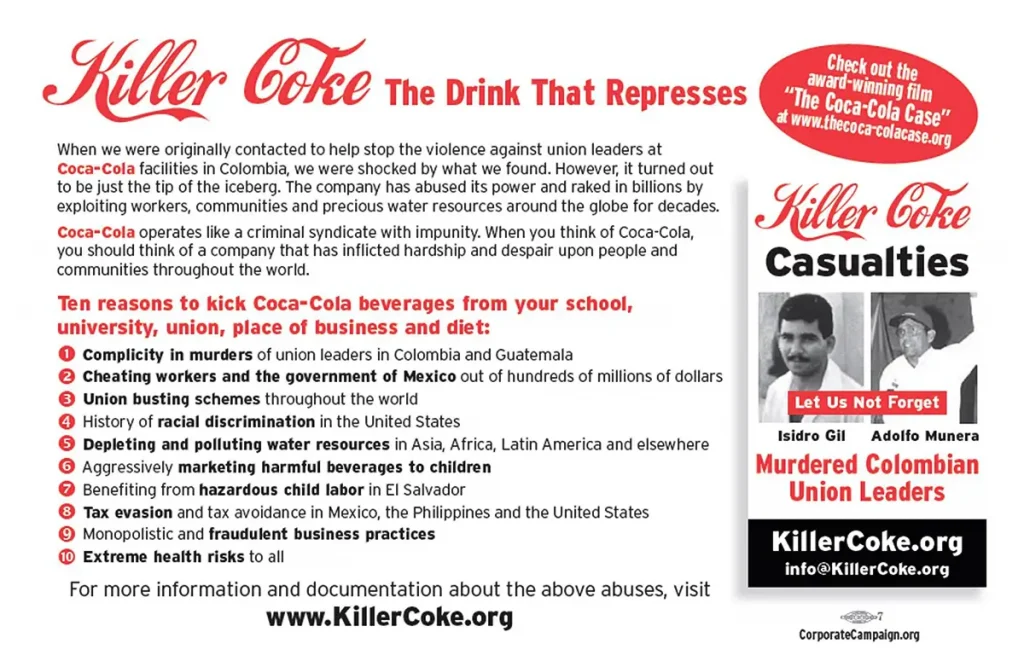
In 2001, a lawsuit was filed on behalf of the Colombian labor union Sinaltrainal (National Union of Food Workers) in the Florida Third District Court of Appeal, demanding monetary compensation for $500 million for the deaths of nine workers, members of the National Union for Food Industry Workers who worked in the Coca-Cola Bebidas y Alimentos plant in Carepa in northern Colombia. Like Guatemalan “incident“ was not enough.
They accused Coca-Cola and its Colombian bottling partners of using paramilitary death squads to murder, torture, and kidnap labor union leaders.
The suit alleged that the company hired militants of the United Self Defense Forces of Columbia (AUC) to murder nine union members including Isidro Segundo Gil who was shot dead inside the Coca-Cola plant. The physical access the paramilitaries have had to bottle plants is impossible without company knowledge because all of the Coca-Cola plants have cameras and private security. Federal Judge Jose E. Martinez progressed the case forward against two Coca-Cola bottlers: Bebidas y Alimentos and Pan-American Beverages, but not against Coke itself. Judge Martinez later dismissed the remaining claims against the two bottlers partly because the Colombian bottling plants were not owned by the Coca-Cola company.
PR folks that are in charge do not want their brand name tarnished, so they like to confuse the topic in any way. Coca-Cola says that assassinations of the Colombian union members are not its responsibility because they are not employed by Coca-Cola directly. The reason why Coca-Cola has other companies bottling the product in different countries around the world is exactly this.
They are giving up some small cuts from the profits in exchange for plausible deniability. Well-designed strategy.

They do not want to be dragged into court if something happens, and it does not really question about money for them. It is about brand image and marketing. They are selling the dream. Even the red Santa Claus is their invention. Some research and brain scans have found that for example when Americans travel, and they do not feel ’safe’ in some third-world country. When they see the Coca-Cola sign, it has a soothing effect on them. It is because from an early age they had been conditioned to associate good feelings with the symbol of Coke.
Coca-Cola itself was found to have done extensive research into something called neuromarketing.
Marketing people like to call it to buy button. Subconsciously condition behavior through association. It has never been the case that you were just drinking sugary fuzzy fluid named Coke. The flavor and the perception of it is a composite perception that your brain builds out of a lot of pieces of things including the emotions that are associated subconsciously with the brand message and other things that the brand message has been associated with. Brands actually have a taste.
Examples of neuromarketing are “Taste the feeling”, and “Open happiness”.
Below is Neuro-Insight’s snapshot showing how viewers’ brains respond to the Pool Boy ad (www.adnews.com.au/news/applying-neuroscience-to-cannes-winning-work-coca-cola-pool-boy).
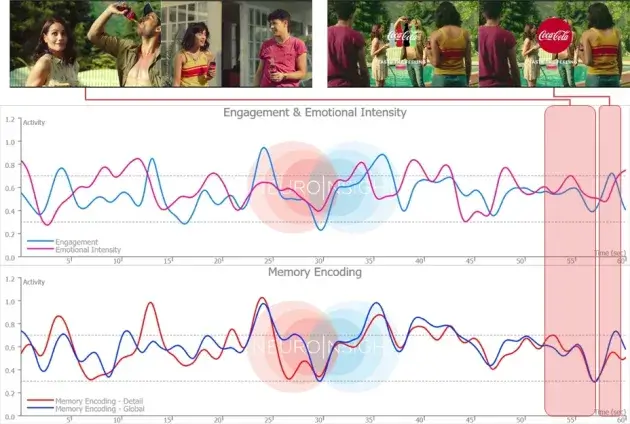
In reality violence, abuse, and exploitation leveled against Coke workers and communities have been uncovered in many other countries as well, notably China, El Salvador, Guatemala, India, Mexico, and Turkey. In extension to the exploitation of workers, Coke has been implicated in the exploitation of children by profiting from hazardous child labor in sugar cane fields in El Salvador and sucking all the underground waters in India creating a catastrophe for local villagers.
It takes two liters of water to create one liter of Coca-Cola. In 2004 Human Rights Watch said that if Coca-Cola wanted to avoid complicity in child labor, it should recognize its responsibility to respect human rights. Above all Coca-Cola is about image and it is going to spend more than two billion dollars on marketing to convince you that “life tastes good.” Thanks in part to Coca-Cola’s marketing campaigns the supersizing of the American obesity problem and its bottom line led to a situation where sugary sodas devoid of nutrition are one of the main sources of calories in the American diet.

In America, more than 80 percent of death-row inmates are requesting Coke for their last meal.
Also when you market soft drinks that contain caffeine like Coca-Cola to young children you are getting them addicted to the stimulants early on.
Caffeine (that is a neurotoxin) can have a detrimental effect on childhood brain development. It is not just the question of obesity. Every 330 ml can of Coke has 34.5 mg of caffeine and diet Coca-Cola have even more. That is enough to stimulate cravings and alter behavior in an adult but give Cola to children they will become hyperactive and addicted. The brains of children have greater sensitivity to caffeine’s effects than the brains of adults. Caffeine can cause them to be hyperactive immediately after drinking it, which is obvious and there is too much refined sugar in the coke as well giving them a burst of energy. However, it also can make them nervous, and anxious, worsen stomach problems and create sleep problems in the long run. The evidence does not show that caffeine stunts growth, but it can make them addicted to it. What happens is the same thing that happens in adults. In cases of daily use of Coca-Cola infused with caffeine brain compensate in expectation of toxin and until the child drinks it is having brain fog, low energy, attention problems, and can be nervous. Same as any other drug addict addicted to amphetamines. If someone has a predisposition to anxiety, it can agitate the situation by creating neurotic-type behavior and chronic stress. Children that have attention difficulties like add (Attention-Deficit Disorder) and Attention deficit hyperactivity disorder (ADHD) should avoid any stimulants like caffeine. A combination of caffeine, sugar, and excitotoxins like aspartame and monosodium glutamate (msg) can exuberate symptoms in children that are already on the ADD side into a full-blown illness. The child would be prescribed the real amphetamine-based drug called Ritalin. Children will suffer withdrawal effects just like adults if they do not have it, at the very least a headache. It is a serious public health issue.
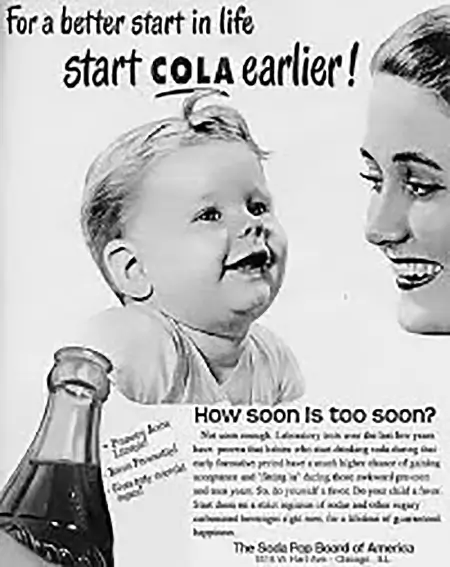
To increase the problem of these caffeinated drinks is the fact that many of them are full of sugar. That is bad nutrition. If you have a child that is drinking more than one sugary drink per day, the child is set up for obesity. Because there is no fiber to slow down digestion blood sugar will spike rapidly, and then it will crash creating hypoglycemia. And the child will seek another Coke. The earlier your child’s brain is addicted to stimulants like caffeine and refined sugar the earlier obesity will begin and the more likely it is to follow you into adulthood.
And the industry loves it. Drinking sugary caffeinated drinks is habit-forming.
It is very clever to put caffeine in a sugary drink and then market that to children. Also given the research that has been conducted in animal models, it is possible that habitual caffeine use may lead to cross-sensitization of the neural reward substrate to illicit drugs which is a problem beyond obesity. If you give Coke to your children, then don’t just believe me, do your own research and see what is best for you. You can read this review if you want (Temple, 2009).
Do we think that Coca-Cola does not know this? Caffeine was always in the formula, not “just“ cocaine. Two basic ingredients that are engraved in the Coca-Cola name are Coca leaves and Cola nut. Cola nut contains caffeine. When they kick out cocaine, they kept in the formula the second best legal stimulant drug that they can use, caffeine.
Coca-Cola claims that caffeine is an integral part of its complex flavor, but that is a lie. Caffeine does not have a taste.
We cannot distinguish between caffeinated and non-caffeinated drinks. It is there for modification of consumer behavior. Coca-Cola once said that capturing high school consumers meant keeping them for 50 to 60 years. Their real target that they want to “capture“ is actually children.
Coca-Cola wants to buy a world of Coke and why? Well, they say they want to spread peace, love, and brotherhood to everyone. However, they actually used World War 2 to establish dominance in a global market.
After the attack on Perl Harbor at the US government’s expanse, meaning taxpayer money, Coke employees were dressed up in army uniforms and given completely made-up the name of technical observers. Then they were sent around the world to establish 64 bottling plants behind the lines. This action plan positioned them to expand and take the entire markets and became a monopolist in all war-devastated economies.
With the help of the US military, they expanded to become the global leader in soft drink production soon after WW2.
Read this sentence again.
With the help of the US military, they expanded to become the global leader in soft drink production soon after WW2.
When private interest controls the conduct of a supposedly democratically elected government and the army, it is a direct definition of fascism.
Today you can be anywhere on the planet except for North Korea and Cuba and get a Coke just around the corner even in places where there is no clean drinking water or electricity. Coca-cola also had no problem with the Nazis. It was one of the three official beverage sponsors of the 1936 Summer Olympics in Berlin.

Advertising and bottling and expanding rapidly to cover the entire German market under Hitler. Corporations from America rebuilt Germany after WW2 and supported the early Nazi regime and then when the war broke out they figured out a way to keep the business going. General Motors was able to keep Opel (a 100 percent GM-owned subsidiary) and continue to make basically most of the German tanks that were used in the war. General Motors was notably more significant to the Nazi war machine than Switzerland. “Enemy” was driving trucks manufactured by Ford and Opel and flying Opel-built warplanes. Ford was able to keep its thing going. We already know about Standard Oil and IG Farben. They kept their thing going. IBM was able to keep its thing going and continue to produce computers for death camps. Nazis used them in Auschwitz and other places to track Jew inmates (Hollerith punch card machines look more like type machines than computers). By request from the Nazis, IBM invented the national census. Thousands of people were hired by IBM and put into the giant warehouse. People went door to door and filled out census forms including religion and residence. All of this information was punched into punch cards. All the banks also used IBM punch cards, so confiscation of the property and business was a piece of cake. Auschwitz tattoo is IBM number. IBM also developed a special program by request from the Nazi regime by which all of the skills were put into one set of cards so that they could cross-tabulate that against where slave labor is needed so that they can work prisoners to death before the gas chamber.
However, what about companies like Coca-Cola? Because they needed their “secret ingredient” in the form of coca leaf extract, they could not keep their thing going. So what they did was they invented a new drink that they can produce with local ingredients made in Germany. That drink was Fanta Orange for the Germans.
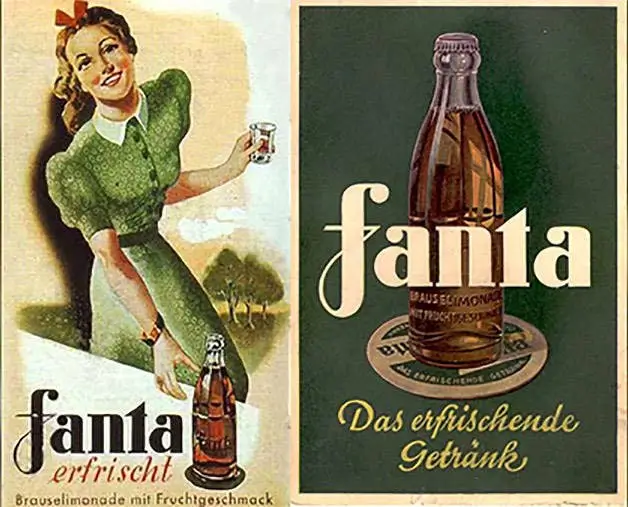
Named Fanta from the German word for fantastic. At the time when the Nazis came to power in 1933, Coca-Cola’s business in Germany was already booming. The direction of a man named Max Keith has helped the company adapt and expand under the Nazi regime. He renewed the Coca-Cola brand in the country and boosted sales even before the Nazi regime. Cola was well known and accepted to drink as much as it was in the US. By the time Adolf Hitler ascended to the proverbial throne in 1933 sales of Coca-Cola had risen from 6,000 cases a year to 100,000. When Nazis came to power, it was no problem for Cola to do business with them too. They have no problem with Nazi racist ideology whatsoever as long as they can make a lot of sales. Through the 1936 Berlin Olympic games, for example, Keith secured that attendants had all the Coke they could want. However, the Coca-Cola Company’s interests were hurt later that year when the Nazi regime began to seriously restrict imports from foreign nations to protect the German economy, and on the list was Coca-Cola syrup as a non-German product.
However, the director of the Coca-Cola Company communicated by a third party to convince Hermann Göring, Hitler’s second in command, to allow the importation of this syrup. At this point, Cola was dealing directly with the Nazis politically. Advertising campaigns worked to convince the beer-drinking populace that fizzy drinks were got alternative for the workingman while on the job and slogans urged the industrial labor force to down tools and drank a refreshing bottle of Coca-Cola.
Whenever propaganda minister Joseph Goebbels booked out the Sportpalast for mass displays of rhetoric Coca-Cola billboards appeared outside, right where the Party faithful were queuing. Not long after, in 1937, Coca-Cola took an extra hit in their attempts to sell their products in Germany when a German official at a rival soda company, Afri-Cola, began distributing pictures of Coke bottle tops from the US that showed the Hebrew characters identifying it as Kosher.
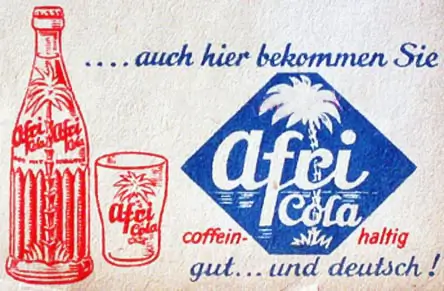
They used this as evidence to claim that a Jew secretly ran the Coca-Cola Company. A Bavarian spring-water bottler suffering from loss of profits got in on the act too, writing to the Food and Agriculture Ministry in Berlin to opine that
“It would be interesting to know whether Jewish capital is active in Coca-Cola GmbH.”
Sales tanked, and the Nazi HQ canceled their orders, forcing Keith to deny any Jewish connection in an advert placed in the Party’s propaganda sheet, Der Stuermer. Here are a couple of front-page examples of where Cocke had its “taste the feeling” neuromarketing ads.
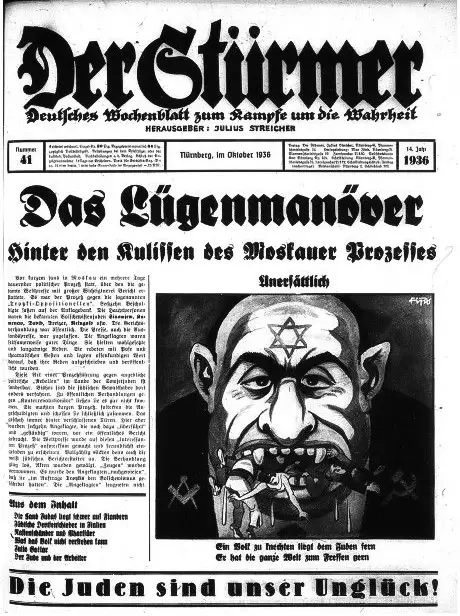


To counteract this notion further, and the ensuing loss of profits from German consumers, Keith began to brand the Coca-Cola Company in Germany as pro-Nazi aggressively.
At one Nazi convention, at celebration Keith ordered a mass “Sieg Heil” in honor of Hitler’s 50th birthday, to commemorate
“Our deepest admiration and gratitude for our Führer who has led our nation into a brilliant higher sphere.”
He also reached out specifically to target the Hitler Youth, attempting to win over the younger generation of Nazis as a standard Coca-Cola policy of marketing to children in order to get them addicted at a young age. On one occasion in the Reichsausstellung Schaffendes Volk in Dusseldorf, an exhibition that celebrated the achievements of the German worker under the Nazi regime Coca-Cola wormed its way into the floorplan of this propaganda fest with a miniature train for the children, a model bottling plant that could wash, cap and fill 4,000 bottles an hour and a 16-meter (50-foot)-long service counter selling ice-cold Cokes to the stupefied punters. Amid the spectacle, Hermann Göring himself paused to enjoy a cool glass of the brown stuff, a moment captured by a company photographer.

With war developing in Europe, Keith worried that his foreign-linked business could be nationalized and that he will be thrown in jail. With his connections in the Third Reich, he was appointed a supervisor of all soft-drink factories in Germany and all of its conquered territories. He soon managed the company in Italy, France, Holland, Luxembourg, Belgium, and Norway. At the time, Coke sold around 4.5 million cases annually in Nazi Germany. However, in 1940, as World War 2 advanced, Keith started to worry about import limitations. Out of concern, he produced a new syrup from local ingredients to be used if they could not get access to the official Coca-Cola syrup from America. To conjure up a new drink they used homegrown apple fibers left over from the cider-making process and whey.
At first, with a dwindling supply of Coca-Cola, Keith worked to ensure that his sodas only went to hospitals for wounded soldiers who were particularly members of the Nazi Party.

When they had completely run out of Coca-Cola, the company started selling Fanta, which was a smash hit among the German populace. In 1941, Keith used his political connections to get around the ban on sugar. Fanta tasted better than rival drinks and became very popular. Housewives even flavored soups and stews with it. It sold 3 million cases in 1943.
When the war ended in 1945, “technical observers” take over the administration of Germany’s industry.
Keith embraced the T.O.s, but they declined to employ him, with one calling him “a second Hitler.” The Coca-Cola Company got back control of their German division and, despite being ousted by the occupying U.S. military as Nazi collaborators, Woodruff reinstated Keith. He was praised as a hero by the Americans back in Atlanta for keeping the company alive in Germany.
The company’s VP of Sales, Harrison Jones, praised Keith by calling him a “great man” for operating in dire circumstances. He was actually rewarded for all of the good work for Coca-Cola, eventually naming him Coca-Cola’s chief for all of Europe (Some rebellious bottlers referred to him as “Super-Führer”). The production of Coca-Cola was quickly reestablished, and Fanta was discontinued for the time being. In April 1955, Coca-Cola reintroduced Fanta with a new recipe, this time as an orange-flavored drink.
They revived the name largely because it was convenient. Coca-Cola already had the copyright, and I think they thought no one would pay attention to history. They will not mention this, one word of this, in the World of Coca-Cola museum. When you ask them, PR folks of Coca-Cola today and for example, fake-truth facts-sites like Snopes will tell you that real fact-check truth is that:
“Fanta was the creation of a German-born Coca-Cola man who was acting without direction from Atlanta.” This is a quote from Snoopes.com that “has long been engaged in the battle against misinformation.”
Or maybe you are inclined to think that the US Government did not know about all of this. Of course, they did, if just only that. Us Government is the largest consumer of IBM products for example. It is the same system.
References:
- Temple J. L. (2009). Caffeine use in children: what we know, what we have left to learn, and why we should worry. Neuroscience and biobehavioral reviews, 33(6), 793–806. https://doi.org/10.1016/j.neubiorev.2009.01.001
Do you have any questions about nutrition and health?
I would love to hear from you and answer them in my next post. I appreciate your input and opinion and I look forward to hearing from you soon. I also invite you to follow us on Facebook, Instagram, and Pinterest for more diet, nutrition, and health content. You can leave a comment there and connect with other health enthusiasts, share your tips and experiences, and get support and encouragement from our team and community.
I hope that this post was informative and enjoyable for you and that you are prepared to apply the insights you learned. If you found this post helpful, please share it with your friends and family who might also benefit from it. You never know who might need some guidance and support on their health journey.
– You Might Also Like –

Learn About Nutrition
Milos Pokimica is a doctor of natural medicine, clinical nutritionist, medical health and nutrition writer, and nutritional science advisor. Author of the book series Go Vegan? Review of Science, he also operates the natural health website GoVeganWay.com
Medical Disclaimer
GoVeganWay.com brings you reviews of the latest nutrition and health-related research. The information provided represents the personal opinion of the author and is not intended nor implied to be a substitute for professional medical advice, diagnosis, or treatment. The information provided is for informational purposes only and is not intended to serve as a substitute for the consultation, diagnosis, and/or medical treatment of a qualified physician or healthcare provider.NEVER DISREGARD PROFESSIONAL MEDICAL ADVICE OR DELAY SEEKING MEDICAL TREATMENT BECAUSE OF SOMETHING YOU HAVE READ ON OR ACCESSED THROUGH GoVeganWay.com
NEVER APPLY ANY LIFESTYLE CHANGES OR ANY CHANGES AT ALL AS A CONSEQUENCE OF SOMETHING YOU HAVE READ IN GoVeganWay.com BEFORE CONSULTING LICENCED MEDICAL PRACTITIONER.
In the event of a medical emergency, call a doctor or 911 immediately. GoVeganWay.com does not recommend or endorse any specific groups, organizations, tests, physicians, products, procedures, opinions, or other information that may be mentioned inside.
Editor Picks –
Milos Pokimica is a health and nutrition writer and nutritional science advisor. Author of the book series Go Vegan? Review of Science, he also operates the natural health website GoVeganWay.com
Latest Articles –
Top Health News — ScienceDaily
- MIT scientists strip cancer of its sugar shieldon December 23, 2025
Scientists at MIT and Stanford have unveiled a promising new way to help the immune system recognize and attack cancer cells more effectively. Their strategy targets a hidden “off switch” that tumors use to stay invisible to immune defenses—special sugar molecules on the cancer cell surface that suppress immune activity. Early tests show it can supercharge immune responses and outperform current antibody therapies.
- Scientists find a weak spot in deadly fungus that shut down hospital intensive care unitson December 23, 2025
A deadly hospital fungus that resists nearly every antifungal drug may have an unexpected weakness. Researchers discovered that Candida auris activates specific genes during infection to hunt for nutrients it needs to survive. This insight came from a new living-host model that allowed scientists to watch the fungus in action. The findings could eventually lead to new treatments or allow current drugs to be repurposed.
- This ultra-sensitive imaging system can spot cancer earlieron December 23, 2025
A new imaging technology can distinguish cancerous tissue from healthy cells by detecting ultra-weak light signals. It relies on nanoparticles that bind to tumor markers, making cancerous areas easier to identify. The system is far more sensitive than existing tools and could speed up cancer screening. Scientists believe it may help detect tumors earlier and reduce delays in diagnosis.
- Hidden brain maps that make empathy feel physicalon December 23, 2025
When we watch someone move, get injured, or express emotion, our brain doesn’t just see it—it partially feels it. Researchers found eight body-like maps in the visual cortex that organize what we see in the same way the brain organizes touch. These maps help us instantly understand actions, emotions, and intentions in others. The discovery sheds light on human empathy and opens doors for new brain-based therapies and AI systems that better understand the body.
- Are they really listening? Watch their blinkson December 23, 2025
Your eyes may reveal when your brain is working overtime. Researchers found that people blink less when trying to understand speech in noisy environments, especially during the most important moments. The effect stayed the same in bright or dark rooms, showing it’s driven by mental effort, not light. Blinking, it turns out, is a quiet marker of focused listening.
- This cancer-fighting molecule took 50 years to buildon December 22, 2025
MIT scientists have achieved the first-ever lab synthesis of verticillin A, a complex fungal compound discovered in 1970. Its delicate structure stalled chemists for decades, despite differing from related molecules by only two atoms. With the synthesis finally complete, researchers created new variants that showed strong activity against a rare pediatric brain cancer. The breakthrough could unlock an entire class of previously unreachable cancer-fighting molecules.
- A new drug could stop Alzheimer’s before memory loss beginson December 22, 2025
New research suggests Alzheimer’s may start far earlier than previously thought, driven by a hidden toxic protein in the brain. Scientists found that an experimental drug, NU-9, blocks this early damage in mice and reduces inflammation linked to disease progression. The treatment was given before symptoms appeared, targeting the disease at its earliest stage. Researchers say this approach could reshape how Alzheimer’s is prevented and treated.
PubMed, #vegan-diet –
- Comparing diet-related attitudes, perceptions, and behaviors of vegan and omnivorous adults: results from a cross-sectional survey study in Germanyon December 22, 2025
CONCLUSION: The findings are consistent with and build on existing research on cognitive and behavioral patterns related to a vegan diet, while at the same time yielding some additional insights. In particular, the results on significant differences in the risk-benefit perception of a vegan diet, as well as on motivations and influences regarding the decision to follow a vegan diet provide an important basis for the development of public health interventions and a foundation for further […]
- Assessment of vitamin A, vitamin B2, vitamin B12, vitamin K, folate, and choline status following 4 months of multinutrient supplementation in healthy vegans: a randomised,…on December 19, 2025
CONCLUSION: A multinutrient supplement containing 82 µg of vitamin B(12) per day significantly positively affected vitamin B(12) blood biomarkers in healthy vegans.
- Exploring the synergistic potential of pH and ultrasonication on the functional properties of pea and lentil protein isolates and its formulation in food producton December 15, 2025
The substitution of meat proteins with plant-based proteins from various sources is often motivated by nutritional considerations. However, the inherent limited solubility of plant proteins, which results in suboptimal techno-functional properties, remains a persistent challenge in food formulation. The purpose of this study was to utilize unique properties of pea (Pisum sativum L.) and lentil (Lens culinaris) through ultrasonication and pH variation in order to develop a stable and […]
- Healthful and Unhealthful Plant-Based Diets and Their Association with Cardiometabolic Targets in Women Diagnosed with Breast Cancer: A Cross-Sectional Analysis of a Lifestyle Trialon December 11, 2025
CONCLUSIONS: Maintaining cardiometabolic risk factors within normal ranges is clinically relevant in BCS, and this may be more likely when a plant-based diet is consumed, especially if low in unhealthy plant foods.
- Functional and Nutritional Properties of Lion’s Mane Mushrooms in Oat-Based Desserts for Dysphagia and Healthy Ageingon December 11, 2025
Hericium erinaceus (Lion’s Mane mushroom) is a medicinal species recognised for its neuroprotective and antioxidant properties. This study investigated its potential as a functional ingredient in oat milk-based desserts formulated for individuals with dysphagia. Freeze-dried Lion’s Mane powder (LMP), containing high-quality protein (~16%, amino acid score 88%), dietary fibre (~31%), and phenolic compounds (72.15 mg GAE/g), was incorporated at varying levels using gelatin or iota-carrageenan […]
Random Posts –
Featured Posts –
Latest from PubMed, #plant-based diet –
- Associations Between Healthy and Plant-Based Dietary Patterns and Cognitive Reserve: A Cross-Sectional Analysis of the 1946 British Birth Cohortby Kelly C Cara on December 23, 2025
CONCLUSIONS: CR was positively associated with healthy dietary patterns and inversely associated with unhealthful plant-based dietary patterns. Diet uniquely explained variations in CR and should be considered among influential lifestyle factors in future research. Longitudinal analyses are needed to confirm these findings.
- Patient-Reported Observance of a Mediterranean Diet and Physical Activity in Patients Living with Breast Cancer: Implications for Primary Care Providersby Lydia Hesseltine on December 23, 2025
CONCLUSION: The majority of patients living with breast cancer did not meet the minimal national recommendations. These findings underscore the need for further research to develop strategies to optimize nutrition and physical activity within oncology and primary care settings.
- Dietary Hydrilla verticillata extract enhances growth and immune defense against Aeromonas hydrophila in Labeo rohitaby Faiza Khanam on December 23, 2025
This study investigated the effects of dietary Hydrilla verticillata extract (HVE) on growth performance, physiological responses, and disease resistance in Labeo rohita fingerlings subjected to Aeromonas hydrophila challenge. Following acclimatization, the fish were divided into 15 tanks at random (30 fish per tank) and given five different diets that contained 0, 75, 150, 300, or 600 mg/kg HVE for 60 days. Growth was significantly (P
- Dietary quercetagetin attenuates H2O2-induced oxidative damage and preserves meat quality in broilers by modulating redox status and Nrf2/ferroptosis signaling pathwayby Wenyue Hu on December 22, 2025
In modern poultry production, oxidative stress has emerged as a pivotal factor compromising the health status and overall performance of broiler. The aim of this study was to investigate the effects of dietary quercetagetin (QG) supplementation on hydrogen peroxide (H(2)O(2))-induced oxidative damage in breast muscle of broilers, focusing on growth performance, meat quality, and antioxidant function, and elucidating the underlying mechanisms. Two hundred and forty one-day-old Cobb broilers […]
- Effects of dietary selenium supplementation on physiological parameters, tissue fatty acid composition, and fatty acid-metabolism relative gene expression of grouper (Epinephelus coioides) fed high…by Yen-Chun Lee on December 22, 2025
The present study evaluated the effects of dietary selenium (Se) supplementation on growth performance, physiological responses, tissue fatty acid profiles, and the expression of genes related to fatty acid metabolism in juvenile grouper (Epinephelus coioides). A control diet based on soy protein concentrate, replacing 40% of the fish meal protein, was supplemented with graded levels of Se at 0, 0.3, 0.6, and 1.0 mg Se kg^(-1). A fish meal-based reference diet was also included for […]
- Unravelling the interaction between feeding regimens and milking time in Parmigiano Reggiano PDO milk: an integrated metabolomics and ion mobility lipidomics approachby Pier Paolo Becchi on December 22, 2025
In this study, an integrated approach based on UHPLC-HRMS metabolomics and IM-HRMS lipidomics has been carried out to unravel the interaction between feeding and milking time in the overall chemical profile of Parmigiano Reggiano (PR) milk. Specifically, ANOVA multiblock OPLS (AMOPLS) modelling revealed the complementarity of the assays in combining the effect of these two critical parameters. In particular, metabolomics highlighted the presence of plant-derived compounds (mainly terpenoids […]
